France, a captivating tapestry of history, culture, and innovation, beckons with its timeless allure and rich heritage. Nestled in Western Europe, this enchanting country is famed for its romantic capital, Paris, adorned with iconic landmarks like the Eiffel Tower, Louvre Museum, and Notre-Dame Cathedral. Beyond its elegant boulevards and charming cobblestone streets, France unfolds its diverse landscapes, from the sun-kissed vineyards of Bordeaux and rolling lavender fields of Provence to the snow-capped peaks of the Alps and the azure coastline of the French Riviera. Celebrated for its gastronomic delights, artistry, and haute couture, France’s legacy resonates through its art, culinary prowess, and a penchant for joie de vivre that continues to captivate the world.
Paris
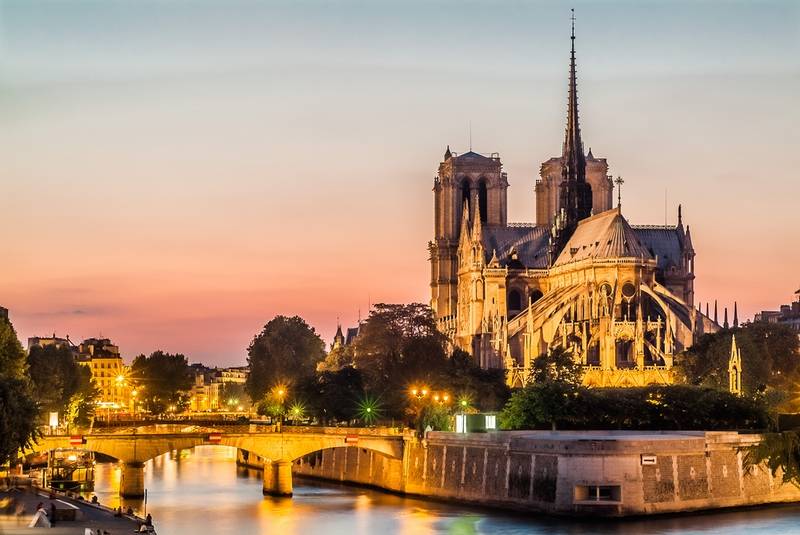 Notre Dame cathedral. ostill/shutterstock |
Paris, the city of lights and love, is a vibrant metropolis that embodies elegance, culture, and enchantment. Gracefully lining the Seine River, Paris stands as a timeless masterpiece adorned with iconic landmarks like the majestic Eiffel Tower, the artistic haven of Montmartre, the historic Notre-Dame Cathedral, and the opulent Palace of Versailles. It is a hub of creativity, boasting world-renowned art museums such as the Louvre, Musee d’Orsay, and Centre Pompidou, showcasing masterpieces that span centuries. The city’s chic boulevards, charming cafes, and haute couture boutiques effortlessly blend modernity with a rich historical tapestry, inviting travelers to indulge in its culinary delights, appreciate its architectural marvels, and immerse themselves in an atmosphere that exudes romance and sophistication.
Fontainebleau
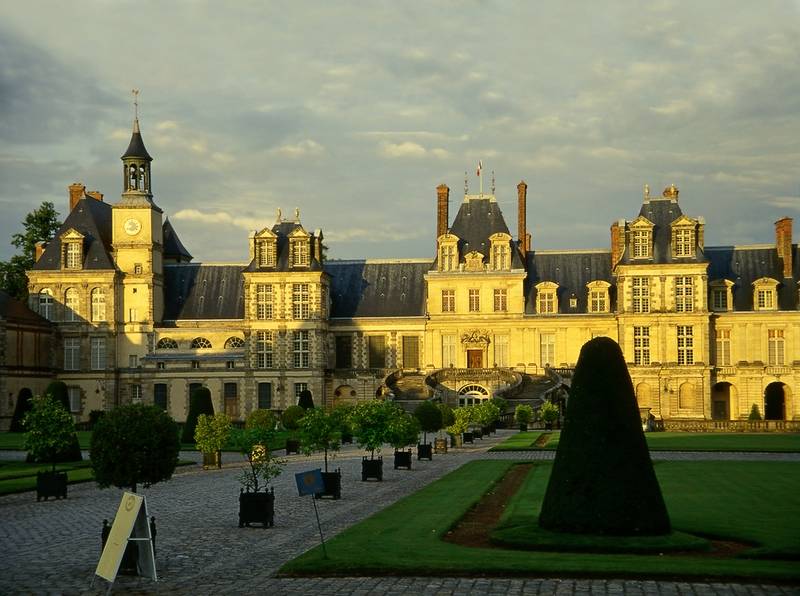
pecold/shutterstock
Fontainebleau, a picturesque town in southeast of Paris, is renowned for its magnificent Château de Fontainebleau, a UNESCO World Heritage site steeped in history and architectural grandeur. This splendid castle, a former royal residence for centuries, showcases a stunning blend of Renaissance and classical styles, adorned with lavish furnishings, intricate frescoes, and sprawling gardens. Beyond its regal halls, Fontainebleau is embraced by the vast Fontainebleau Forest, a haven for outdoor enthusiasts, offering scenic trails for hiking, rock climbing opportunities, and a tranquil setting for nature lovers.
Chartres Cathedral
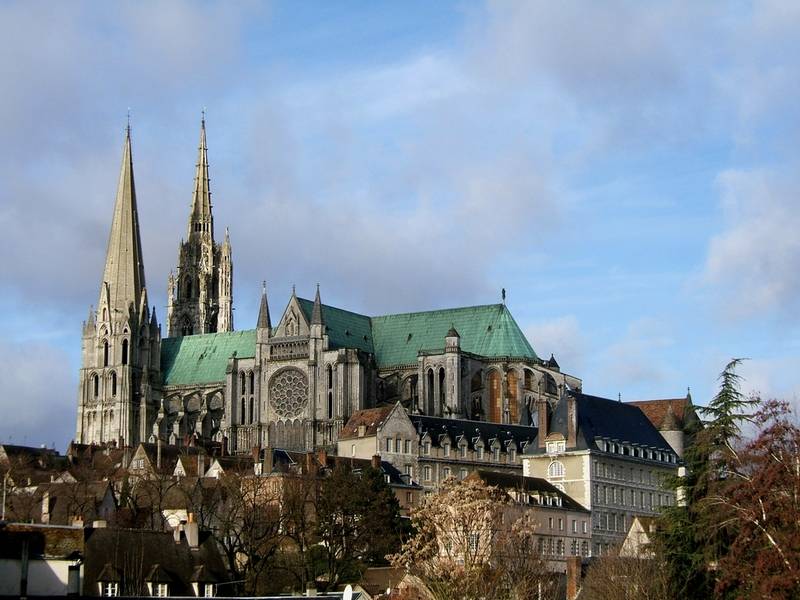
gautier-willaume/shutterstock
The Chartres Cathedral, a magnificent testament to medieval Gothic architecture, stands as an awe-inspiring marvel in the heart of Chartres, France. Revered as one of the finest examples of this architectural style, this UNESCO World Heritage site captivates visitors with its soaring spires, intricate sculptures, and stunning stained glass windows. Dating back to the 12th and 13th centuries, the cathedral’s exterior showcases intricate stone carvings, while its interior boasts a mesmerizing collection of over 150 exquisite stained glass windows, renowned for their vivid colors and biblical narratives.
Alsace
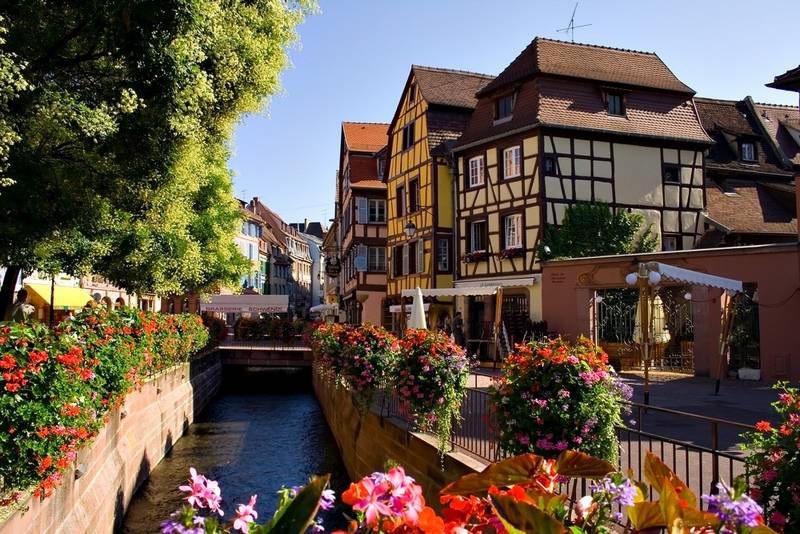 Colmar. photostockar/shutterstock |
Alsace is a region that enchants visitors with its unique blend of French and Germanic influences, captivating scenery, and rich cultural heritage. Famous for its charming half-timbered houses adorned with colorful flowers, picturesque villages like Strasbourg, Colmar, and Riquewihr evoke a storybook-like ambiance. The region is renowned for its exquisite wines, particularly Riesling, Gewürztraminer, and Pinot Gris, cultivated in the scenic vineyards that roll across the undulating hills. Alsace boasts a rich history reflected in its well-preserved castles, ancient churches, and museums, offering insights into its past. Additionally, its culinary delights, including the delectable tarte flambée and hearty choucroute garnie, contribute to the region’s allure.
Loire Valley
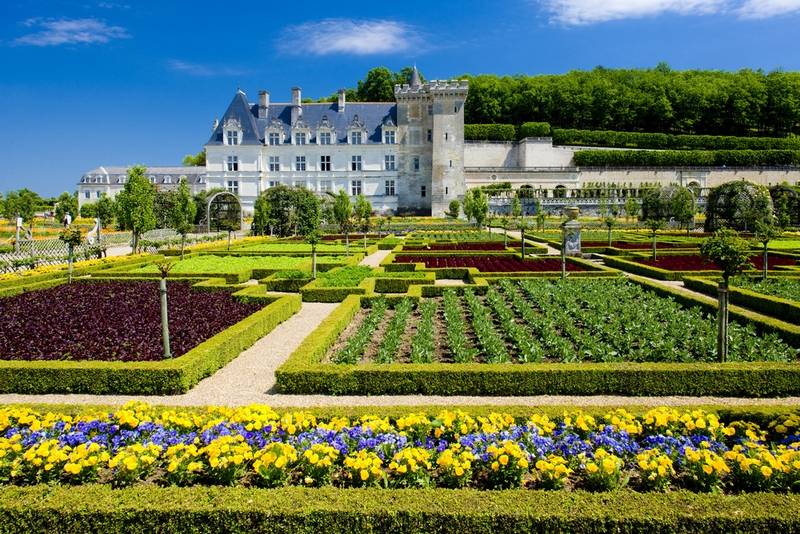 Villandry Castle. phb.cz-(richard-semik)/shutterstock |
The Loire Valley, often referred to as the “Garden of France,” is a captivating region renowned for its stunning châteaux, verdant landscapes, and historical significance. Stretching along the Loire River in central France, this UNESCO World Heritage site is adorned with over 300 châteaux, each boasting unique architectural styles, from the fairy-tale turrets of Château de Chambord to the elegant gardens of Château de Villandry. The region’s picturesque vineyards produce exquisite wines, including Sancerre, Pouilly-Fumé, and a variety of fruity reds, adding to its allure. Beyond its architectural marvels and vineyards, the Loire Valley encompasses charming towns and villages, delightful markets, and scenic cycling routes along the riverbanks.
Claude Monet’s House, Giverny
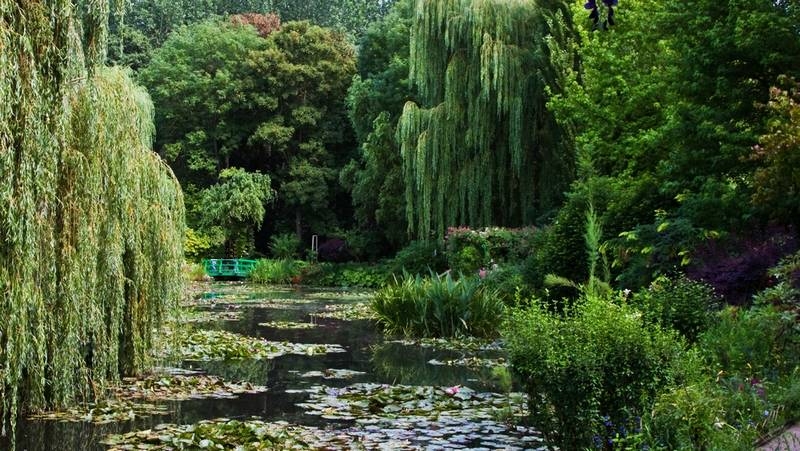
Claude Monet’s garden. christina-mcwilliams/shutterstock
Claude Monet’s house, located in Giverny, stands as a testament to the renowned Impressionist painter’s life and artistic inspiration. This idyllic property served as Monet’s residence from 1883 until his passing in 1926 and is where he created many of his iconic works, particularly his famous series of water lilies. The house itself is a charming pink farmhouse surrounded by lush gardens, which Monet meticulously designed and cultivated, including the iconic water garden with its Japanese bridge and shimmering pond filled with water lilies and other aquatic plants. Visitors to Monet’s house can explore the artist’s studio, furnished in a manner that reflects his life, peruse his extensive collection of Japanese prints, and wander through the enchanting gardens.
Oradour sur Glane
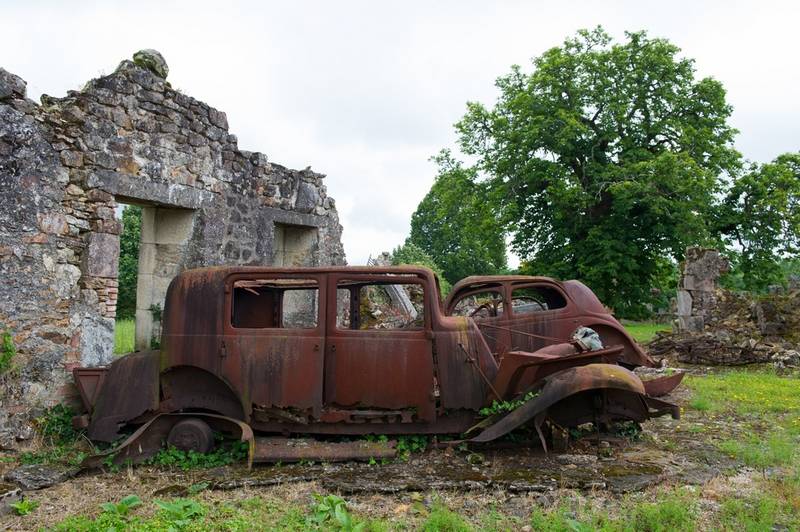
ivonne-wierink/shutterstock
The village of Oradour-sur-Glane in France holds a haunting and tragic history that dates back to World War II. On June 10, 1944, during the German occupation, the entire village was brutally massacred by the Nazi Waffen-SS. Men, women, and children were rounded up and killed, and the village was destroyed. Today, Oradour-sur-Glane remains a memorial site and a preserved testimony to the atrocities of war. The ruins of the village have been left untouched as a stark reminder of the horrors of the past.
Mont Saint Michel

phb.cz-(richard-semik)/shutterstock
Mont Saint-Michel, a mesmerizing UNESCO World Heritage site, is an island commune situated off the northwestern coast of France, near Normandy. This awe-inspiring medieval abbey, perched atop a rocky island, stands as a symbol of spiritual and architectural grandeur. Surrounded by vast tidal flats and encircled by stout walls, the Mont Saint-Michel Abbey is a marvel of Gothic architecture, boasting a stunning blend of religious history and ingenious engineering. The abbey’s soaring spires, cloisters, and intricate architectural details attract visitors from around the world. Accessible via a causeway during low tide or by a shuttle when the tide is high, the pilgrimage to Mont Saint-Michel is an enchanting journey.
Carnac Megatliths
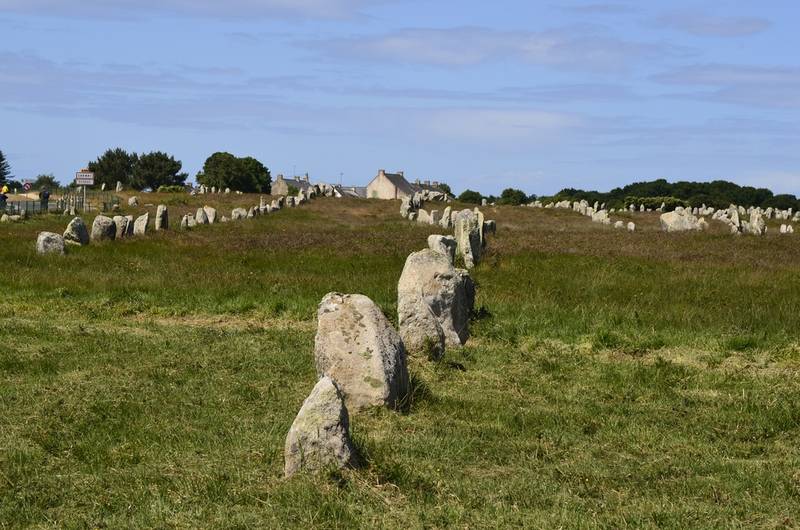
fritz16/shutterstock
The Carnac Megaliths in Brittany, France, stand as one of the most significant prehistoric sites in the world, comprising thousands of ancient standing stones, or menhirs, arranged in alignments, dolmens, and tumuli. This vast collection of megalithic monuments dates back to the Neolithic period, with some stones believed to have been erected as early as 4500 BC. The alignments span for several kilometers, divided into different groups: Menec, Kermario, and Kerlescan, each with its own distinct characteristics. The purpose behind these alignments remains a subject of mystery and fascination, believed to have had ritual, astronomical, or religious significance for the ancient inhabitants.
Carcassonne
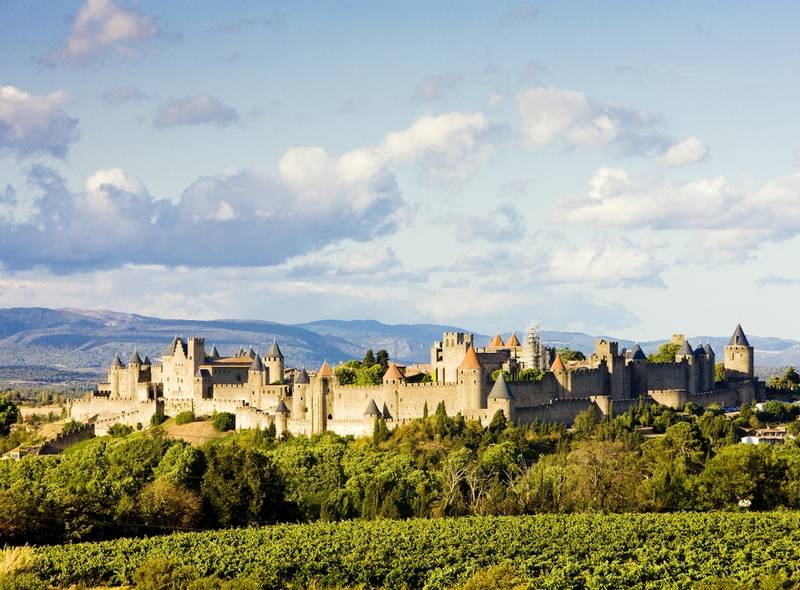
phb.cz-(richard-semik)/shutterstock
Carcassonne, a fortified city in the Languedoc region of southern France, stands as a remarkable testament to medieval architecture and history. The city is famous for its stunning UNESCO World Heritage-listed medieval fortress, La Cité de Carcassonne, which features well-preserved ramparts, towers, and narrow cobblestone streets within its fortified walls. The fortress, with its 53 watchtowers and double-walled fortifications, transports visitors back in time, offering a glimpse into the medieval way of life. The highlight is the Château Comtal, a castle within the fortress walls, which allows visitors to explore its inner courtyards, exhibits, and panoramic views of the surrounding countryside.
Mont Blanc and Chamonix
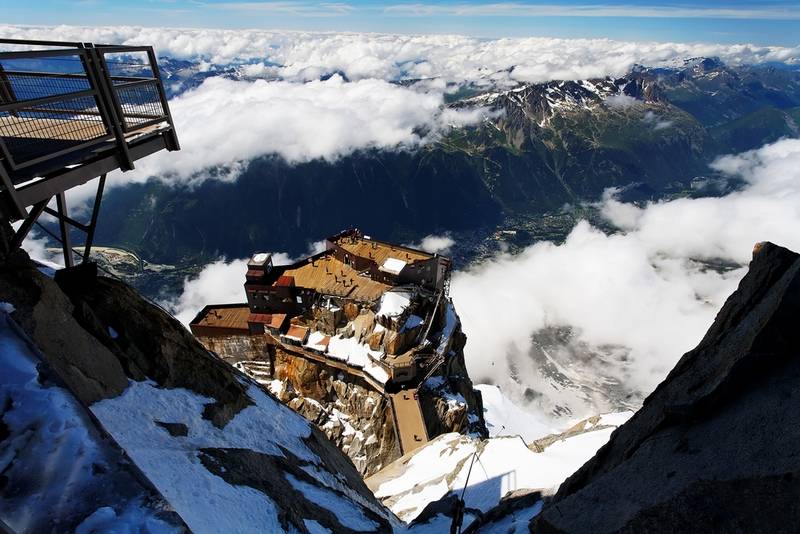 Aiguille du Midi. rechitan-sorin/shutterstock |
Mont Blanc, the highest peak in the Alps and Western Europe, majestically towers over the charming town of Chamonix in southeastern France. The breathtaking beauty of Mont Blanc and its surrounding peaks attracts mountaineers, adventurers, and nature enthusiasts from across the globe. Chamonix, nestled in the valley below, serves as a gateway to the Mont Blanc massif and offers a picturesque setting with its alpine vistas, vibrant streets lined with shops and restaurants, and a rich mountaineering heritage. Visitors can take in panoramic views of the mountains via cable cars, such as the Aiguille du Midi, which provides an unparalleled vista of the French, Swiss, and Italian Alps. Chamonix is not only a haven for outdoor activities like skiing, snowboarding, and hiking but also a cultural hub hosting events, art galleries, and museums that celebrate the region’s alpine history and natural wonders.
Annecy
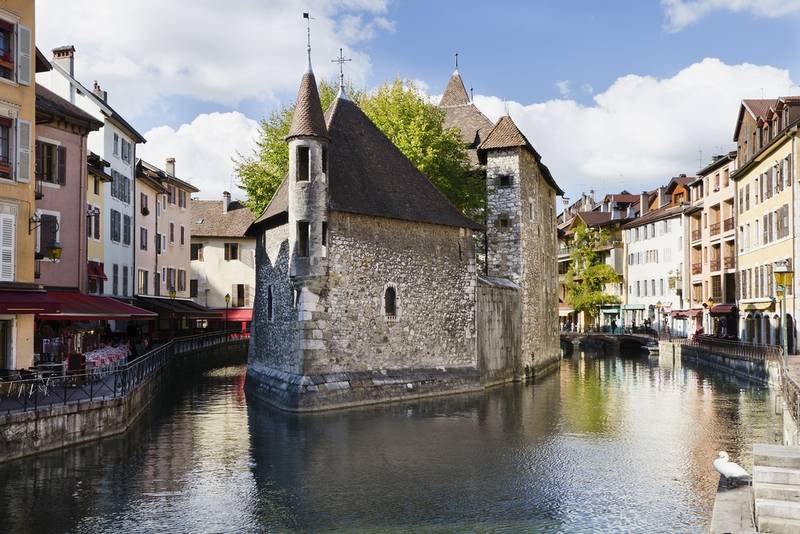 Old prison in Annecy. vallefrias/shutterstock |
Annecy, often dubbed the “Venice of the Alps,” is a picturesque town in the French Alps, renowned for its stunning natural beauty, charming old town, and crystal-clear lake. The town is situated on the shores of Lake Annecy, offering breathtaking views of the azure waters against the backdrop of snow-capped mountains. The Old Town, with its winding cobblestone streets, pastel-colored buildings, and lively markets, exudes a fairytale-like ambiance, adorned with quaint boutiques, cafes, and historic landmarks like the Palais de l’Isle, a former prison that is now a museum showcasing local history. The Palais de l’Isle is perched on a small island in the Thiou River, adding to the town’s unique charm. Annecy is also a haven for outdoor enthusiasts, offering opportunities for cycling, hiking, boating, and water sports on the lake. The annual Annecy International Animated Film Festival, attracting animation enthusiasts from around the world, adds a cultural vibrancy to this already enchanting town.
Les Trois Vallees
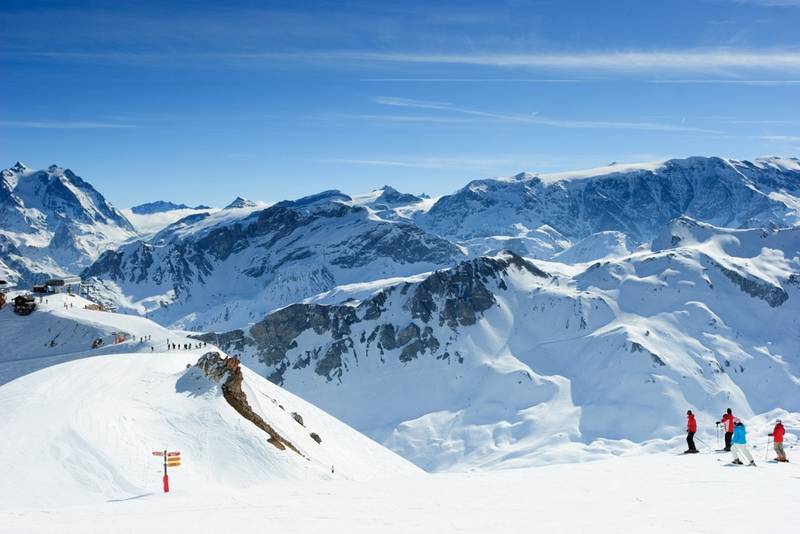
Meribel ski resort. dmitry-naumov/shutterstock
Les Trois Vallées, translating to “The Three Valleys,” is one of the most extensive ski areas in the world. It encompasses a vast interconnected network of ski resorts and mountain slopes, including Courchevel, Méribel, Val Thorens, Les Menuires, and several others. Renowned for its exceptional skiing and snowboarding opportunities, Les Trois Vallées boasts a vast terrain, catering to all skill levels, from beginners to expert skiers and snowboarders. The region offers an extensive lift system, providing access to a wide array of pistes, off-piste terrain, and snow parks. Beyond winter sports, Les Trois Vallées transforms into a year-round destination, offering hiking trails, mountain biking, and scenic views of the surrounding Alpine landscapes during the summer months.
Pont du Gard
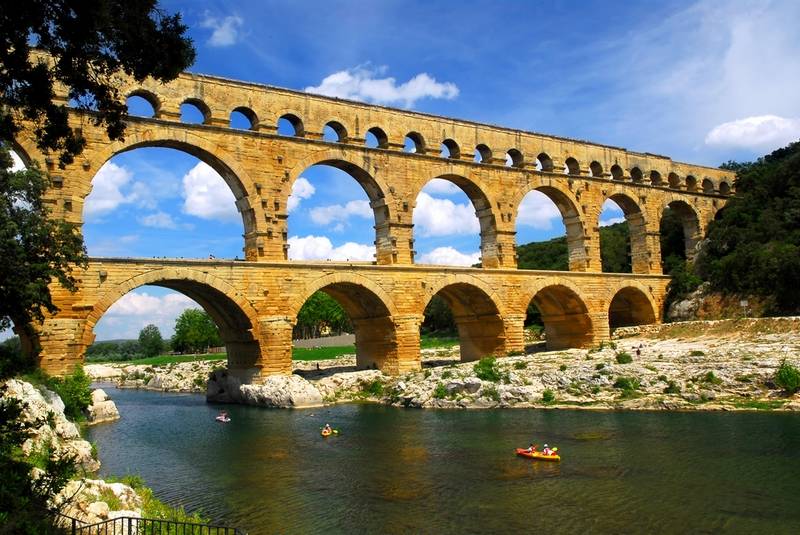
elena-elisseeva/shutterstock
The Pont du Gard is an ancient Roman aqueduct bridge located near Nîmes in the south of France. This UNESCO World Heritage site is a testament to Roman engineering and is considered one of the most significant and well-preserved Roman structures in the world. Built in the 1st century AD, the Pont du Gard spans the Gardon River and was part of a 31-mile aqueduct system that supplied water to the city of Nîmes. The bridge stands as a marvel of ancient architecture, comprising three tiers of arches constructed without mortar using precisely cut stones. Visitors can admire its grandeur, walk across the top level of the bridge, and explore the surrounding area, which includes a museum detailing the history of the aqueduct and its engineering.
Gordes and Moustiers Sainte Marie
 Verdon Gorge. sigurcamp/shutterstock |
Gordes and Moustiers-Sainte-Marie are two charming and picturesque villages in the Provence region of southeastern France, each offering its own unique allure and character.
Gordes, perched atop a hill in the Luberon region, is renowned for its stunning stone architecture, narrow cobblestone streets, and panoramic views of the surrounding countryside. The village features beautifully preserved medieval buildings, including the 16th-century castle, quaint squares, and a 12th-century church. Gordes is also known for its vibrant art scene, attracting artists and art enthusiasts with its galleries and exhibitions.
Moustiers-Sainte-Marie, nestled in the Verdon Regional Natural Park, is famous for its dramatic setting beneath towering limestone cliffs and its traditional pottery. The village is characterized by its charming streets adorned with colorful facades, quaint squares, and a cascading waterfall that flows through the center. Visitors can explore the narrow alleyways, visit local artisan workshops producing exquisite pottery, and admire the Notre-Dame de Beauvoir chapel perched high on a rocky outcrop above the village.
Rocamadour
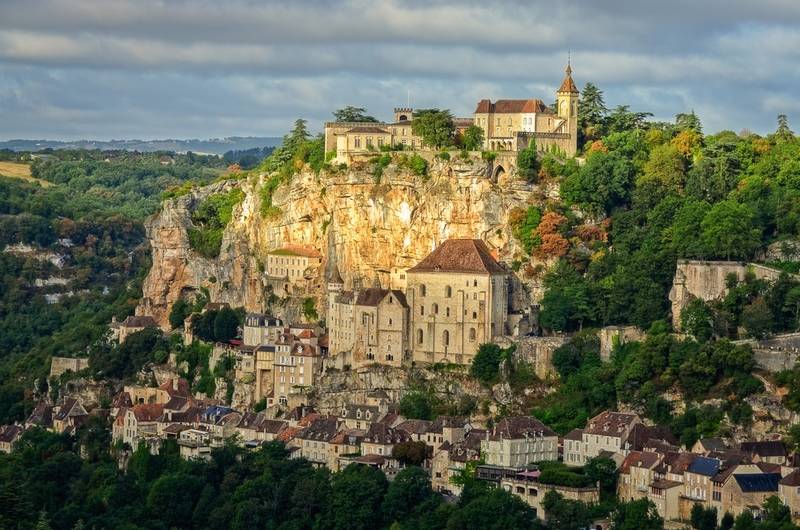
martin-m303/shutterstock
Rocamadour, a captivating medieval village perched dramatically on a cliffside in the Lot department of southwestern France, is a renowned pilgrimage site and a place of profound spiritual significance. This UNESCO World Heritage site is revered for its religious history, featuring a cluster of historic monuments including chapels, churches, and the revered Sanctuary of Rocamadour.
The village is built in tiers, with ancient buildings clinging to the steep rocky walls, creating a stunning visual spectacle. Pilgrims have been drawn to Rocamadour for centuries to pay homage to the Black Madonna housed in the revered Notre Dame Chapel, believed to possess miraculous healing powers.
Apart from its religious significance, Rocamadour offers breathtaking views of the Alzou Valley and the picturesque countryside. Visitors can explore the narrow cobblestone streets, visit the various chapels, and ascend the Grand Escalier, a monumental staircase lined with stations of the cross. The village also boasts charming shops selling local crafts and delicious regional cuisine.
Palais des Papes, Avignon
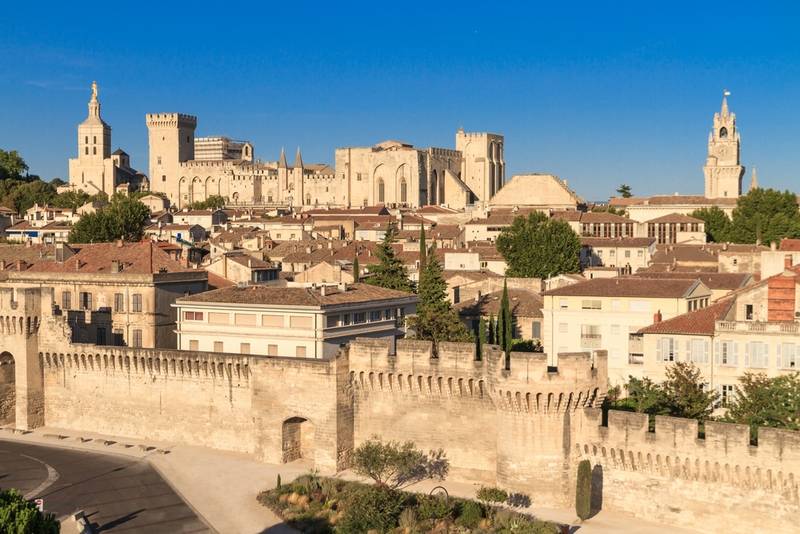
bertl123/shutterstock
The Palais des Papes, or Palace of the Popes, is an architectural marvel in the heart of Avignon, France. This UNESCO World Heritage site was the residence of the popes during the 14th century when the papacy temporarily relocated from Rome to Avignon. The palace is a testament to medieval grandeur and power, featuring impressive Gothic architecture, towering walls, and massive halls adorned with stunning frescoes and artwork.
Comprising two main buildings—the Old Palace and the New Palace—the complex spans an extensive area, offering visitors a glimpse into the opulent lifestyle of the papal court. The Great Chapel, the Consistory Hall, and the private chambers of the popes are among the highlights of this historical monument.
French Riviera
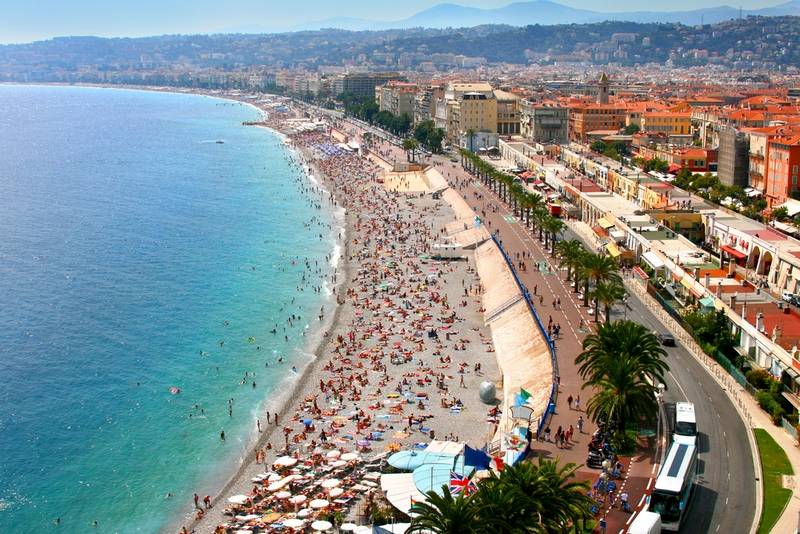 Nice. almotional/shutterstock |
The French Riviera, also known as the Côte d’Azur, is a glamorous and sun-kissed stretch of coastline along the Mediterranean Sea in southeastern France. Renowned for its breathtaking beauty, luxurious resorts, vibrant cities, and glamorous lifestyle, the French Riviera has been a playground for the rich and famous for decades.
Cities like Nice, Cannes, Saint-Tropez, and Monaco epitomize the allure of the region. Nice, with its stunning Promenade des Anglais, vibrant markets, and charming Old Town, offers a perfect blend of culture and seaside relaxation. Cannes is famous for its iconic film festival, luxury boutiques along La Croisette, and beautiful sandy beaches. Saint-Tropez exudes a chic and glamorous atmosphere, attracting yacht enthusiasts, fashionistas, and artists to its stylish cafes, designer shops, and bustling nightlife.
Monte Carlo
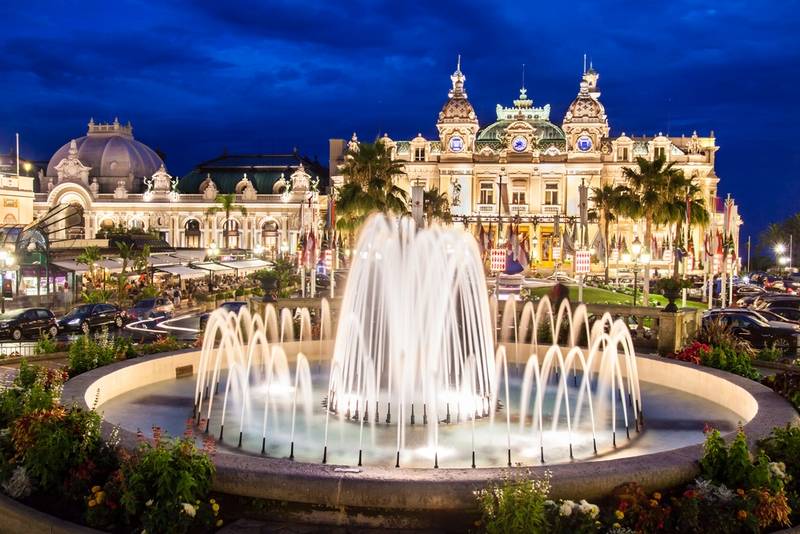
Monte Carlo Casino. matej-kastelic/shutterstock
Monte Carlo is a glamorous district located in the city-state of Monaco, along the French Riviera. It’s renowned for its opulence, luxury, and world-class entertainment, making it a playground for the rich and famous.
At the heart of Monte Carlo lies the iconic Monte Carlo Casino, an architectural masterpiece known for its grandeur and sophistication. The casino exudes an air of elegance, offering gambling rooms adorned with lavish decor, chandeliers, and an ambiance steeped in history and luxury.
Monte Carlo is also famous for its Formula 1 Grand Prix race, held annually on the Circuit de Monaco. The narrow, winding streets of the principality transform into an exhilarating racetrack, attracting racing enthusiasts and spectators from around the world.
Additionally, Monte Carlo boasts luxurious hotels, high-end boutiques featuring designer brands, gourmet restaurants, and vibrant nightlife. The district’s stunning views of the Mediterranean Sea, upscale lifestyle, and cultural events, such as the Monte Carlo Opera and Ballet, contribute to its allure as a destination synonymous with sophistication and extravagance.
Corsica
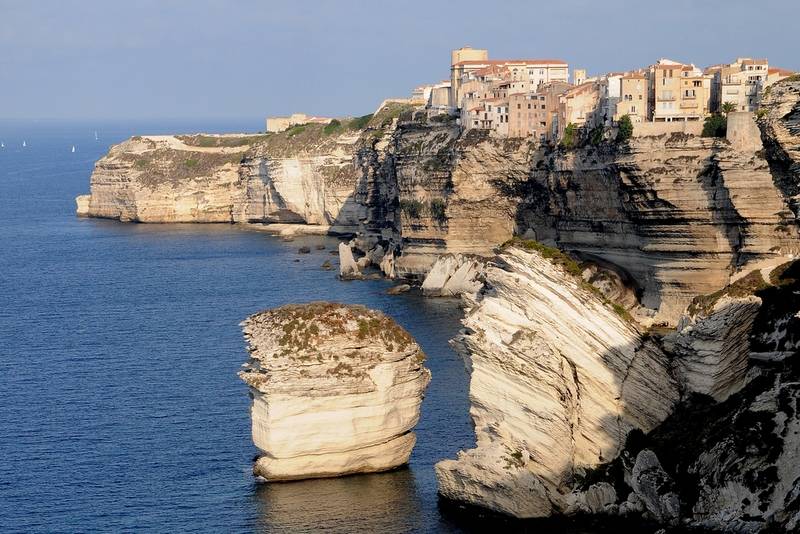 bonifacio. jp-photographie/shutterstock |
Corsica, known as “L’Île de Beauté” (the Isle of Beauty), is a stunning Mediterranean island that belongs to France but retains a distinct identity, culture, and rugged beauty of its own. This diverse island is characterized by its dramatic landscapes, pristine beaches, mountainous terrain, and rich history.
The island offers a diverse range of experiences, from the azure waters and sandy beaches along its coastline to the mountainous interior with peaks reaching over 2,700 meters, including Monte Cinto, the highest point. Corsica is a paradise for outdoor enthusiasts, offering opportunities for hiking, trekking, rock climbing, and water sports like sailing and diving.
Corsica’s towns and villages are steeped in history, showcasing a blend of French and Italian influences. Ajaccio, the birthplace of Napoleon Bonaparte, features historic sites, charming streets, and a vibrant atmosphere. Bonifacio, perched atop cliffs overlooking the sea, boasts a picturesque old town and stunning views of the coastline.
The island also has a rich culinary tradition, offering delicious local cuisine, including Corsican cheeses, cured meats, seafood, and wines.
Andorra
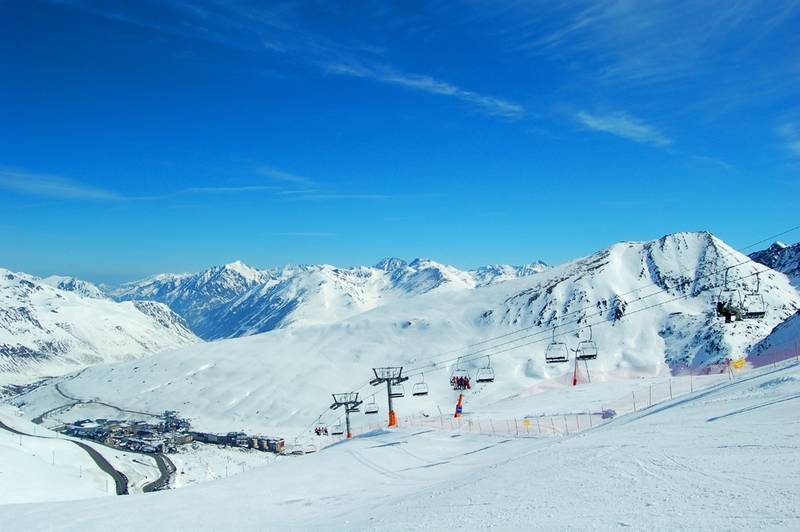
enia/shutterstock
Andorra is a small, independent principality located in the Pyrenees mountains between France and Spain. Despite being one of the smallest countries in Europe, Andorra is known for its stunning natural landscapes, duty-free shopping, and a thriving tourism industry.
The country boasts picturesque mountain scenery, making it a haven for outdoor enthusiasts all year round. During winter, Andorra’s ski resorts, such as Grandvalira and Vallnord, attract skiers and snowboarders with their extensive slopes and modern facilities. In the warmer months, the mountains offer opportunities for hiking, mountain biking, and other outdoor activities amid breathtaking alpine vistas.
Andorra’s capital, Andorra la Vella, is a charming city known for its tax-free shopping, offering a wide range of goods from electronics to luxury items. Visitors can explore the city’s historical sites like Casa de la Vall (the parliament building), stroll through the streets lined with shops, and experience the local cuisine in its restaurants.



